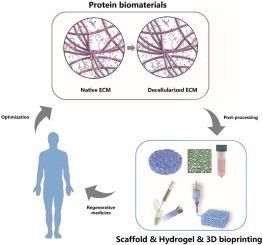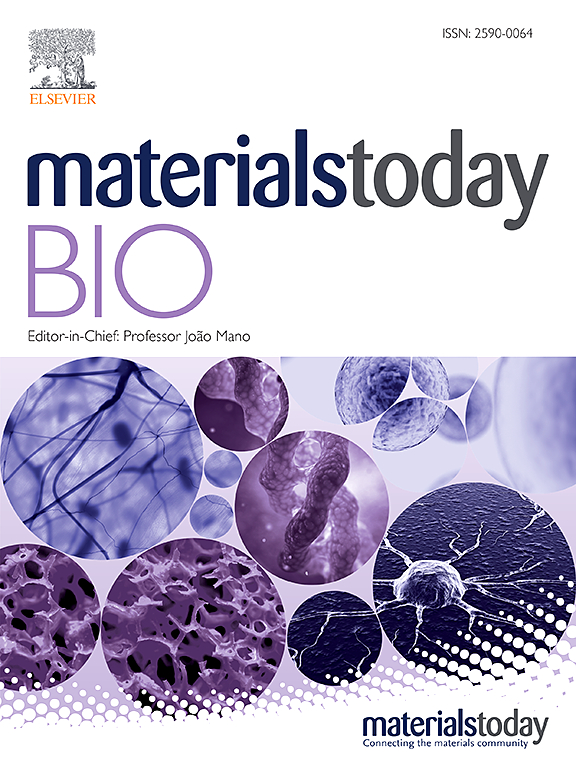选择适合特定再生需求的脱细胞 ECM 的注意事项
IF 8.7
1区 医学
Q1 ENGINEERING, BIOMEDICAL
引用次数: 0
摘要
一种理想的生物材料应能创造一种定制的组织特异性微环境,从而促进和引导组织修复过程。脱细胞细胞外基质(decellularized extracellular matrix,dECM)具有良好的生物相容性和与原生组织相似的生化特性,因此通常能提高再生效果,改善形态和功能恢复。通过利用各种脱细胞技术和后处理方案,可以灵活地从不同来源制备不同状态的 dECM,并为不同组织定制专门的理化特性。为了启动精心策划的组织再生反应,dECM 通过激活各种重叠的信号通路在伤口部位发挥多重作用,促进细胞粘附、增殖和分化,并通过调节各种免疫细胞(包括巨噬细胞、T 细胞和肥大细胞)抑制炎症。功能性组织修复可能是采用优化的 dECM 生物材料的主要目的。在此,我们回顾了目前不同种类的 dECM 在提高组织再生效率方面的应用,并着重介绍了开发用于特定组织工程应用的 dECM 的关键注意事项。本文章由计算机程序翻译,如有差异,请以英文原文为准。

The considerations on selecting the appropriate decellularized ECM for specific regeneration demands
An ideal biomaterial should create a customized tissue-specific microenvironment that can facilitate and guide the tissue repair process. Due to its good biocompatibility and similar biochemical properties to native tissues, decellularized extracellular matrix (dECM) generally yields enhanced regenerative outcomes, with improved morphological and functional recovery. By utilizing various decellularization techniques and post-processing protocols, dECM can be flexibly prepared in different states from various sources, with specifically customized physicochemical properties for different tissues. To initiate a well-orchestrated tissue-regenerative response, dECM exerts multiple effects at the wound site by activating various overlapping signaling pathways to promote cell adhesion, proliferation, and differentiation, as well as suppressing inflammation via modulation of various immune cells, including macrophages, T cells, and mastocytes. Functional tissue repair is likely the main aim when employing the optimized dECM biomaterials. Here, we review the current applications of different kinds of dECMs in an attempt to improve the efficiency of tissue regeneration, highlighting key considerations on developing dECM for specific tissue engineering applications.
求助全文
通过发布文献求助,成功后即可免费获取论文全文。
去求助
来源期刊

Materials Today Bio
Multiple-
CiteScore
8.30
自引率
4.90%
发文量
303
审稿时长
30 days
期刊介绍:
Materials Today Bio is a multidisciplinary journal that specializes in the intersection between biology and materials science, chemistry, physics, engineering, and medicine. It covers various aspects such as the design and assembly of new structures, their interaction with biological systems, functionalization, bioimaging, therapies, and diagnostics in healthcare. The journal aims to showcase the most significant advancements and discoveries in this field. As part of the Materials Today family, Materials Today Bio provides rigorous peer review, quick decision-making, and high visibility for authors. It is indexed in Scopus, PubMed Central, Emerging Sources, Citation Index (ESCI), and Directory of Open Access Journals (DOAJ).
 求助内容:
求助内容: 应助结果提醒方式:
应助结果提醒方式:


